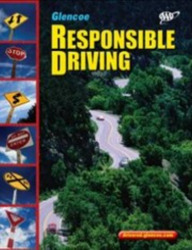
Responsible DrivingChapter 15: Vehicular EmergenciesVehicular EmergenciesSelect the phrase that best completes each sentence below. Write the letter of the answer you have chosen to the left of each statement. _____1. The first thing to do in the event of brake failure is to (pg. 313) a. use the parking brake to stop your car. b. pump the brake pedal rapidly. c. shift to a lower gear. d. steer against the curb. _____2. Engine failure can be caused by (pg. 310) a. a broken timing gear. b. a lack of fuel. c. extreme heat. d. all of the above. _____3. If your engine stalls, (pg. 312) a. your power brakes won't work at all. b. your power steering won't work at all. c. your power brakes and power steering won't work very well. d. you should pump your power brakes. _____4. In case of total steering failure, (pg. 315) a. stop quickly using the foot brake. b. stop as quickly as possible using the parking brake. c. downshift. d. do both b and c. _____5. If your tire loses pressure while you are driving, you should (pg. 316) a. keep a firm grip on the steering wheel with both hands. b. release the accelerator pedal slowly. c. brake hard and pull over. d. do both a and b. _____6. If you change a flat tire for an undersized or low-mileage spare, you should drive (pg. 318) a. no faster than 50 mph to the nearest repair station. b. no faster than 15 mph to the nearest repair station. c. no faster than 25 mph to your destination. d. no farther than 6 miles to the nearest repair station. _____7. If you are involved in a collision and even if no one appears to be hurt, you should (pg. 325) a. stop immediately and pull your vehicle off the roadway. b. accuse the other driver of causing the collision. c. keep on driving to the nearest phone and alert the police. d. do none of the above. _____8. To warn other drivers of a collision, you can (pg. 325) a. turn on your four-way flashers. b. set flares or reflective triangles in front of and behind the collision scene. c. wave a flashlight or a light-colored cloth at oncoming traffic. d. do all of the above. _____9. Fatality rates are highest for occupants of (pg. 326) a. large cars. b. small pickup trucks. c. tractor-trailers. d. station wagons. _____10. If you have injuries as a result of a motor vehicle collision, or if the crash was serious, you should (pg. 327) a. continue to your destination. b. see a doctor. c. see your lawyer. d. file an accident report. |  |















